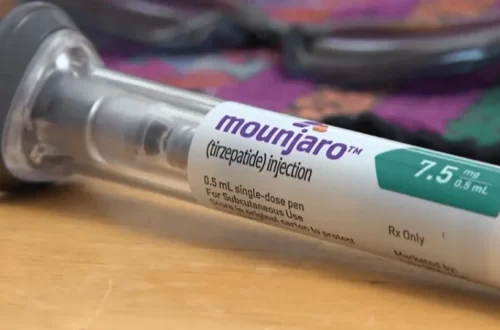
How to Grow Hair Back After a Scalp Fungal Infection – How Long Does It Take
It becomes clear that there are numerous causes for hair loss when factors like daily stress and other stressors are taken into account. Infections with Scalp Fungal Infection are one of them. Other body hair, like eyebrows and eyelashes, can also fall out as a result of fungal and yeast infections.
Hair regrowth may be slow in cases of Scalp Fungal Infection because the fungus that causes the condition must be treated for at least 6 to 12 weeks.
What is Scalp Fungal Infection?

Your skin and hair can be infected by a fungus called tinea capitis, also known as Scalp Fungal Infection. Although it won’t make you a zombie, it can change the way you look.
Scalp ringworm is another name for scalp fungus. Contrary to its name, there is no worm involved; rather, contagious fungi are the sole cause of this type of infection.
It begins when a particular kind of fungus begins to grow on the top layer of your skin, just like other typical fungal infections do.
A similar infection known as tinea barbae, which appears on your face, chin, and neck, can also affect the area around your beard.

About 40 different species of fungi have been linked to tinea infections in the feet, groin, scalp, and other body parts, according to the Centers for Disease Control and Prevention (CDC). Fungi from the Microsporum and trichophyton genera in particular frequently cause fungal infections of the scalp.
Scalp fungus can cause a variety of symptoms, including:
- Dry, scaly skin
- Redness
- Itching
- Dandruff
- Hair loss
According to a number of variables, the severity of these symptoms can change. Sometimes scalp fungus results in the development of gray, scaly patches of skin across your scalp along with a very slight amount of discernible hair loss.
A scalp fungal infection can result in inflammation, lesions, and secondary bacterial infections in more severe cases.
How Do You Know If Hair Loss is Caused by Fungus?
Experienced and knowledgeable hair care professionals can recognize whether the fungus is the root of hair loss right away. But one must not lose sight of the fact that fungus infections are a medical issue, requiring a doctor’s examination.
A large percentage of people who shed as a result of a fungus have tinea capitis, a type of fungus. Simple person-to-person transmission is possible for this particular fungus infection. Additionally, those with a type of candidiasis known to cause thrush in the mouth and groin are comparatively more prone to this condition.
Read More: How to Get Sand Out of Hair

Tinea capitis is a type of fungus that causes the infection, which has some distinct signs and characteristics. These can be listed as follows:
- Itching that increases over time and begins to feel uncomfortable
- Scaling of the skin around the hair follicles
- Areas of hair loss caused by a fungal infection that is constantly increasing in size
- In the area where hair loss is experienced, the formation of a black-dotted and bumpy appearance due to broken hair strands
- Infection and rash that also occurs in other parts of the body
Various fungi, including Trichomycosis and Piedra, can also cause hair loss. These can result in shedding despite being less frequent.
How to Prevent Scalp Fungal Infection?

Maintaining good hygiene is the best way to stop a Scalp Fungal Infection of the scalp. When hygiene standards are followed, there is also a significantly lower chance that such an infection will occur. Other common options include the use of antifungal medications and antifungal shampoos.
In addition to good hygiene, there are some other straightforward safety measures that can be taken to significantly lower the risks. The most important measures at this point can be listed as follows:
- Adopt a balanced diet. Alcohol, sugar, and starch should all be consumed in moderation.
- Only put on a hat when absolutely necessary.
- Cut back on or stop using steroids altogether.
- Use natural remedies (such as coconut oil, apple cider vinegar, etc.) to improve the health of your hair.).
What Are the Treatment Methods?

In the answer to the question of how hair grows after a Scalp Fungal Infection, the right treatment is very important. A variety of treatments for this condition have been developed as a result of the fact that fungal infections are currently one of the most prevalent causes of hair loss. A portion of the treatments in question are medical, but a larger portion involve natural healing techniques.
Fortunately, it’s very simple to treat Scalp Fungal Infections, especially if you catch them early.
The simplest method for treating piedra is to simply shave the affected area before applying a combination of anti-fungal creams. However, the majority of tinea capitis cases can be managed without causing additional hair loss.
The following treatments are considered the best for ridding the Scalp Fungal Infection:
- Griseofulvin, a mild oral antifungal, is administered to kids over a period of 6 to 8 weeks. This is rarely used in adults because it can affect women’s reproductive systems for up to a month after treatment and men’s sperm for up to six months after treatment.
- For adults, the infection can be cured in as little as 3–4 weeks with the help of Terbinafine, a highly effective drug.
- Itraconazole and fluconazole are two other less frequently prescribed drugs with a good track record.
- Along with the aforementioned remedies, anti-fungal shampoos are also employed. These only need to be used twice a week, but should be mixed in the ratio of 2% ketoconazole and 1% selenium sulfide.
There isn’t much one can do to hasten the process of getting ringworm off of their scalp, so it’s always important to take every precaution you can to keep the condition from returning.
Scalp Infection Or Fungus: Which is It?
How can you tell if your scalp has a fungus, a viral infection, or a bacterial infection? Even though you might be itching to look at some extremely repulsive side-by-side photos right now, the truth is that making decisions on your own is frequently challenging.
If you’re not a fungus expert or perhaps a dermatologist, you may find it difficult to distinguish between fungal dandruff and a scaly scalp caused by scarring alopecia. While fungal infections may have obvious visual cues, such as white growths or ring-like patterns, dandruff is more likely to be difficult to diagnose.
The best way to determine whether you have a Scalp Fungal Infection and which fungal infection you have is to speak with a healthcare professional and allow them to examine the affected areas of your skin.
FAQs
Is Hair Loss Due to Fungal Infection Reversible?
In cases of tinea capitis, the fungus that causes the condition must be treated for at least 6 to 12 weeks, and hair growth may be gradual. Early intervention is crucial in preventing potential permanent hair loss. Baldness in both the male and female patterns can be treated, but it usually worsens over time.
How Long Does It Take for Hair to Regrow After Fungal Infection?
When you take antifungal medication, they get better. Following treatment, hair typically grows back 6 to 12 months later. Your child can cover up the bald spots in the interim by donning a hat or scarf.
Can Fungus Cause Permanent Hair Loss?
Painful, pus-filled patches with occasional oozing are called tinea capitis kerion. Your child’s immune system reacts to the fungus, resulting in kerion. It might result in permanent hair loss and scarring. Normal hair loss is not a result of non-inflammatory tinea capitis.





Average Rating